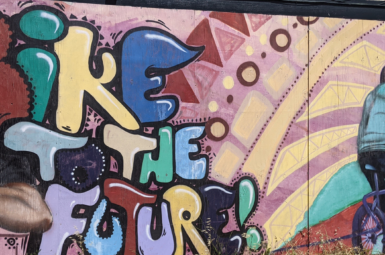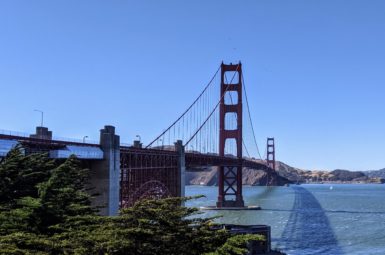News Converted Railroads Lead to Seamless Bike Adventures
Imagine packing your bags, getting on your bike, and heading out of town on a quiet bike path. A few days later, that same path has carried you to another city hundreds of miles away, without having to navigate traffic the entire time. Is this the Netherlands? Denmark? Some future bike utopia? Nope – you can do that today between Pittsburgh and Washington, DC. Might we do the same in California? Read about MCBC’s Policy & Planning Director’s recent adventure by bike.
A Great Trail
While the US is not known for its excellent intercity bike travel, there are a few exceptions to that rule, and the Great Allegheny Passage/Chesapeake & Ohio Canal Trail (GAP/C&O Canal) is one. Spanning 342 miles between Pittsburgh, PA and our nation’s capital, the route consists of two different trails, but presents as a single seamless experience. Following former rail rights-of-way from Pittsburgh to Cumberland, Maryland, and the towpath of the Chesapeake and Ohio Canal from Cumberland to Washington, DC, the trail is truly an all-ages-and abilities walking and biking trail.
- Setting off from Pittsburgh
- Arrival in Washington, DC
In 342 miles, the trail crosses streets less than half a dozen times, allowing riders to fully relax, knowing they will seldom need to interact with cars and trucks. As it parallels slow-moving rivers for most of its length, the slope of the trail rarely exceeds 1%, a barely noticeable grade. The comfort of the trail is reflected by its broad mix of users, which include families with children, older folks on cruisers, and baggage-laden tourers on gravel, recumbent, and tandem bikes.
My Trip
In early August, I started a through-ride of the GAP/C&O with a few friends. Rather than write a full travelogue, I want to share a few highlights and observations from the trail, and how they can relate to riding in our own state.
Towns
Because the route runs through old rail and river towns, you never feel like you’re out in the wilderness. Only a few miles ever separate you from a water refill, a bathroom, or a bite to eat. Some towns have seen better days, but many have oriented toward the trail and cater to hungry, thirsty, happy riders.
Amenities
On the Pennsylvania side (the GAP), the amenities are very good. Bathrooms, water fountains, picnic benches, and bike repair stands are placed every few miles. Additionally, some towns have coffee shops and bar carts right along the trail (this didn’t help our daily mileage, but did make it more enjoyable).
- Many towns have food near the trail
- And some offer trailside beers
While the C&O Canal Trail is a little more rustic, it has hike-in/bike-in campsites every ~5 miles with water, toilets, tables, and a firepit. Done for the day? You’re always within minutes of camp.
Tunnels
When the GAP and C&O Canal Trails were being developed, in the ‘80s and the late ‘50s respectively, trains and canal boats had long since ceased operation. The many tunnels along those routes, necessary due to the rich topography of the Allegheny Mountains, were remnants of the coal trade, but stood shuttered and in disrepair. As the trails were developed, one by one these tunnels were refurbished and reopened to bikers and hikers, knitting the network together and closing the gaps.
- Exiting one of the trail’s many tunnels
- The longest is The Big Savage tunnel at 1 km
The longest tunnel on the GAP, the Big Savage Tunnel (over half a mile in length), was re-opened in 2005, 30 years after its abandonment by the Western Maryland Railroad. A short documentary tells the story of the massive project ($18M in today’s dollars), and how the visionary leader of the Allegheny Trails Alliance, Linda McKenna Boxx, made the dream into a reality. This route and these tunnels bear a striking resemblance to Marin’s own rail tunnels—the Cal Park Hill and the still-shuttered Alto Tunnel. While the GAP effort had doubters and the project was often in peril, today it is clear that Boxx and others left a priceless legacy to future generations.
Bike Lanes
While the GAP/C&O Canal Trails seldom travel along roads shared with cars, those short segments offer physical separation between riders and vehicles. When we prioritize the safety and comfort of riders over parking, we can do amazing things.
- Protected bike lanes in a small town
- Pedestrian and bike access is prioritized
Camping
Travelers can decide between camping or inns located in the trailside towns. We opted for the former, taking advantage of the main no-reservation, bike-in campsites along the route (during our four nights on the trail, we only needed to reserve a campsite once). The bike-in campsites were rustic, but charming. They had everything we needed (water, toilets, TP), and were reliably located at the water’s edge, letting us cool off after a long day of riding.
- Campsites are rustic but more than adequate
- Nearly all treat you to riverside views
Could we have that here?
With the unparalleled natural beauty of our great state, why shouldn’t we have something like this here in California? While driving up Route 1 is a time-honored tradition for Californians, the world is changing. We are daily feeling the effects of climate change and smoke-filled air, and are ever more conscious of the need to be in balance with nature and emit less greenhouse gas.
To this end, different ways to explore our state by low and zero-emission means are needed. Happily an effort is already underway to develop just such a thing—The Great Redwood Trail.
Spearheaded by our own state senator, Mike McGuire, the Great Redwood Trail will use the right-of-way of the defunct Northwestern Pacific Railroad between Sausalito and Eureka, to create a 320-mile hiking and biking trail.
To some, this endeavor may seem overly ambitious, too costly, or purely recreational in nature. But know that it has been done on the GAP/C&O Canal Trail. Be it creating protected routes through small towns, building pathways along river canyons, or reopening long-closed tunnels, it can be done. It has been done. And once opened, there is no doubt that it will be well used by Californians of all walks (and rolls) of life.
- You’re never far from the water’s edge
- Take a ride through transportation history
If you’re curious about the Great Redwood Trail, you can watch a virtual town hall hosted by Sen. McGuire here. And if you want to help take action to open our own version of Big Savage Tunnel, sign up for updates here.
If you would like additional information, please contact warren@www.marinbike.org
sign-up for advocacy alerts
We will need your help! Please sign-up for advocacy alerts using the form below and we’ll tell you when/how to support our efforts.
members make it happen
We’re working to make Marin more bike-friendly for people of all ages and abilities. Are you with us?















